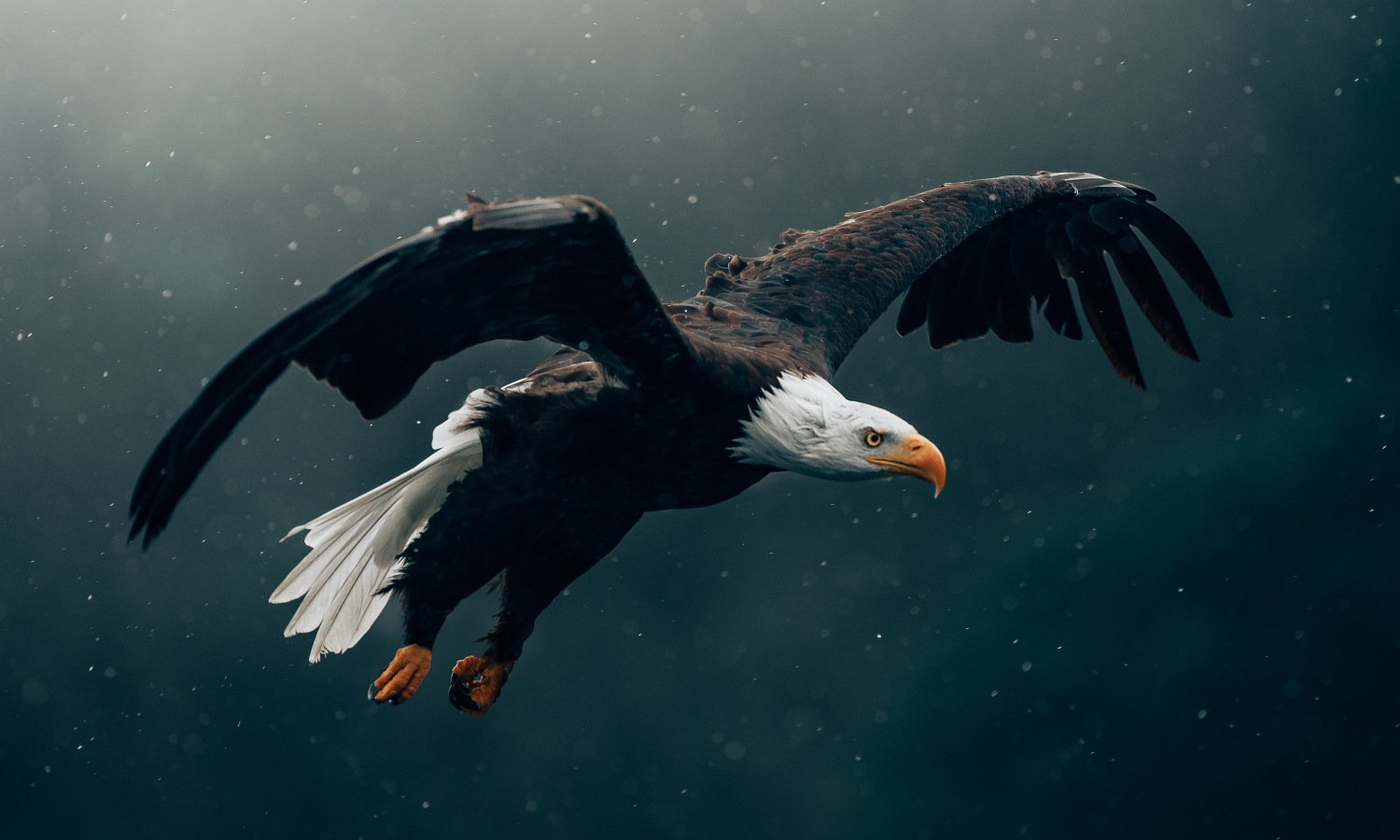Elemental Energy (EE) could probably not have picked a more sensitive wildlife zone to propose their industrial wind turbine project than the Lakeland’s Northern Valley. As we noted previously, it’s a migratory corridor for the endangered Whooping Crane,1 which local residents have spotted in the region.
But’s it’s more than that: Alberta Fish and Wildlife (AFW) has designated the Northern Valley as a “Wildlife Sensitivity Zone.” Kayla Hellum, Environmental Coordinator for the Lakeland Industry and Community Association (LICA) confirms that it is because of the presence of Sharp-tailed Grouse and the Bald Eagle.2 Indeed, they have frequently been spotted in the area by hikers, canoers and bird-watchers, as Bald Eagles feed on fish in rivers and lakes.
Wind turbines have also emerged as one of the greatest human threats to many species of large, threatened and high-conservation value birds, after habitat loss from agriculture. Wind energy threatens golden eagles, bald eagles…
Michael Shellenberger, “Why Wind Turbines Threaten Endangered Species With Extinction”, June 26, 2019, Forbes
In fact, the North Saskatchewan River itself is listed as a “Key Wildlife and Biodiversity Zone”. It is denoted by the pink zone around the river and its valley in the map below. The large green area is the Wildlife Sensitivity Zone. The enclosed white region denotes the Elemental Energy proposed wind project.3 However, the map only represents a 1500-meter setback zone from the turbines — not the actual limit to the impact of the massive turbines. Studies have shown that harmful effects from wind turbines can reach significantly further,4 particularly due to infrasonic frequencies below the human audible range. These can cause in both humans and animals serious health effects and what has been recognized legally as “Wind Turbine Syndrome” (WTS) over a long range.5 That means the proposed Northern Valley project is not only directly impacting the Wildlife Sensitivity Zone, but encroaching well into the Key Wildlife and Biodiversity Zone of the North Saskatchewan River.
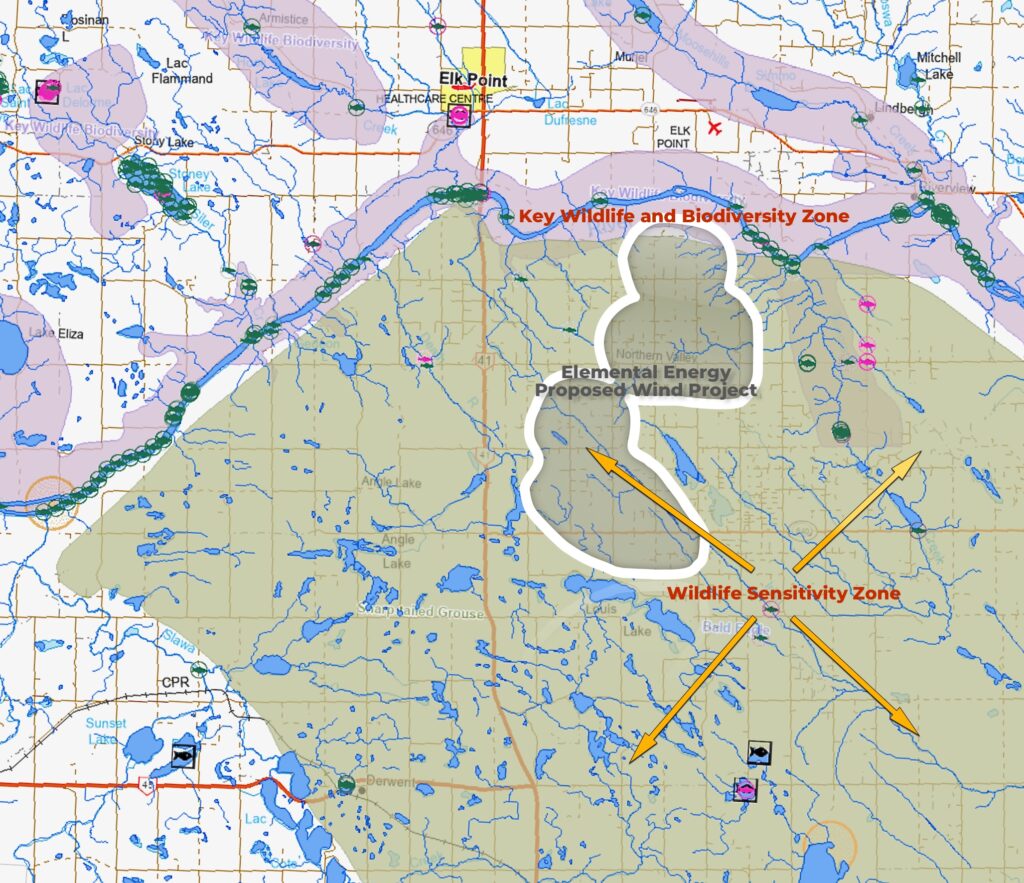
Moreover, EE’s south end of the project is directly north of a designated Ducks Unlimited wildlife area. Hence, birds traveling north-south toward this habitat would be directly impacted by the presence of the turbines, as can be clearly seen in the bottom right corner of the map below. That means a high risk of bird-turbine collisions or deprived habitat.
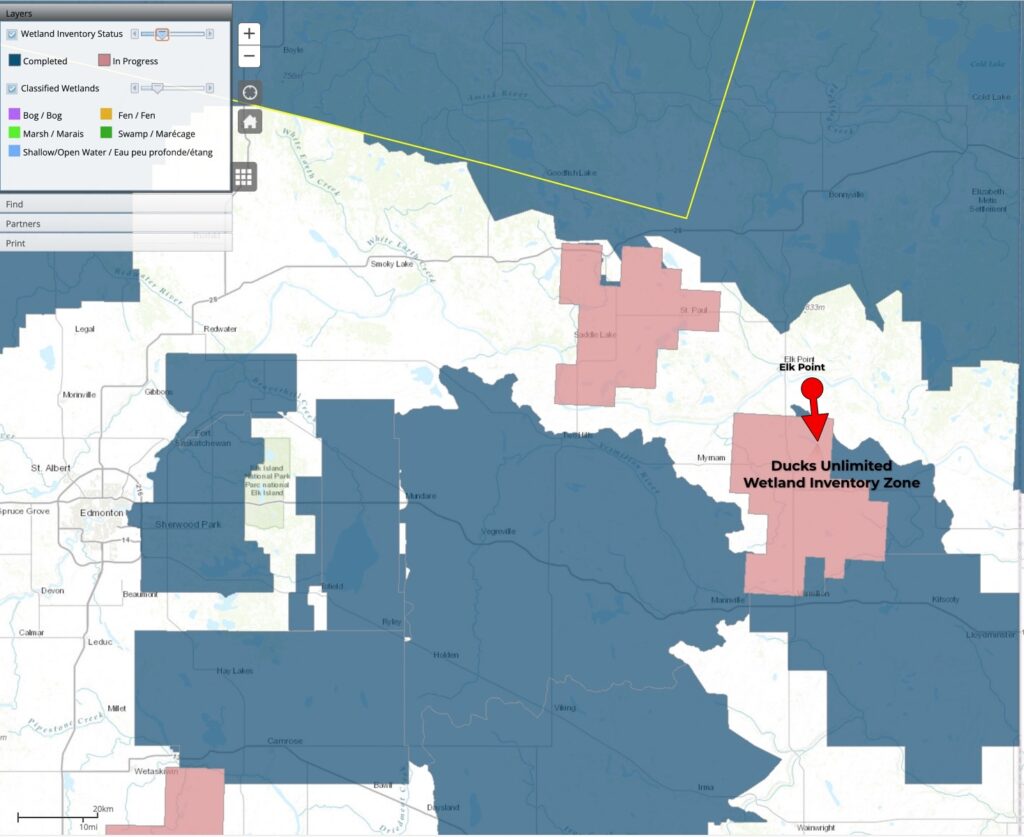
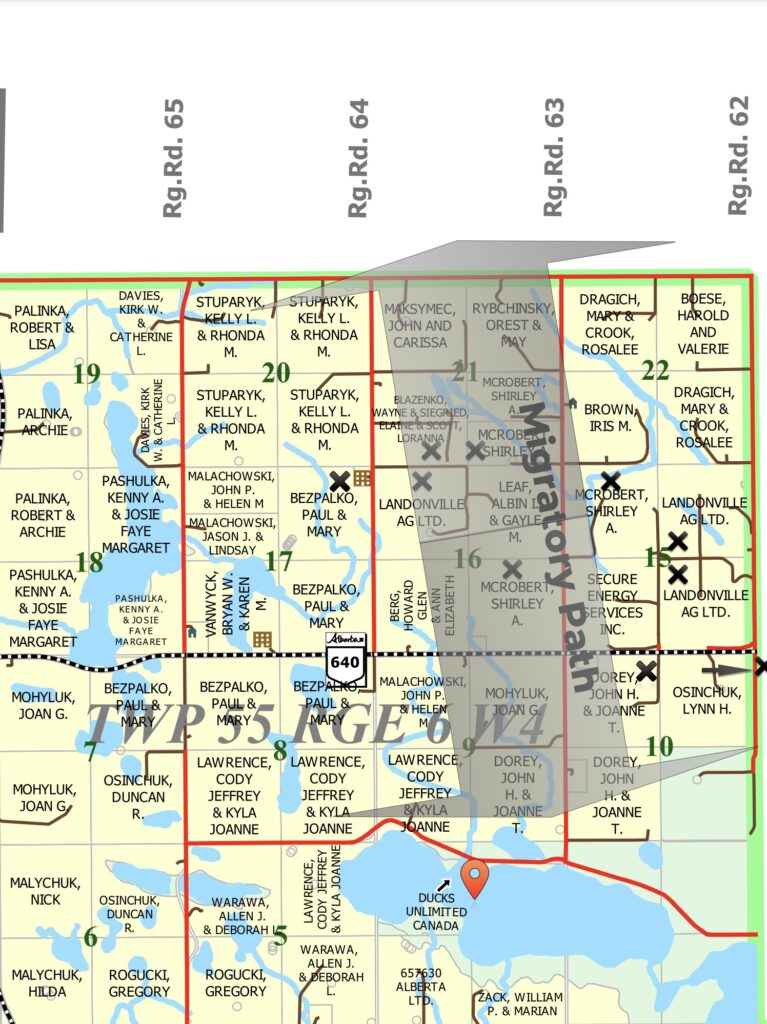
Ducks Unlimited warns that, of the endangered Whooping Crane, “breeding pairs typically raise only one chick each season, making population growth slow, and threats such as extreme weather and human activity could undo their progress.”6 Such as installing massive wind turbine plants in their migratory habitats?
Hellum notes that the Northern Valley is also host to an “At Risk” species of the Canadian Toad, again, directly in competition with the proposed EE wind project. Badgers, owls, and other species known to be vulnerable have also been spotted habitating in the wind project zone. The American Badger is listed as a “sensitive” species in Alberta for this region. According to a study in Great Britain:
The very high levels of cortisol detected in hair from badgers living near wind farms compared with turbine-free sites strongly indicates that turbine-impacted badgers were suffering from a chronic increase in their hypothalamo-pituitary-adrenal axis activity and thus can be described as stressed…
Journal of Wildlife Diseases, 2016
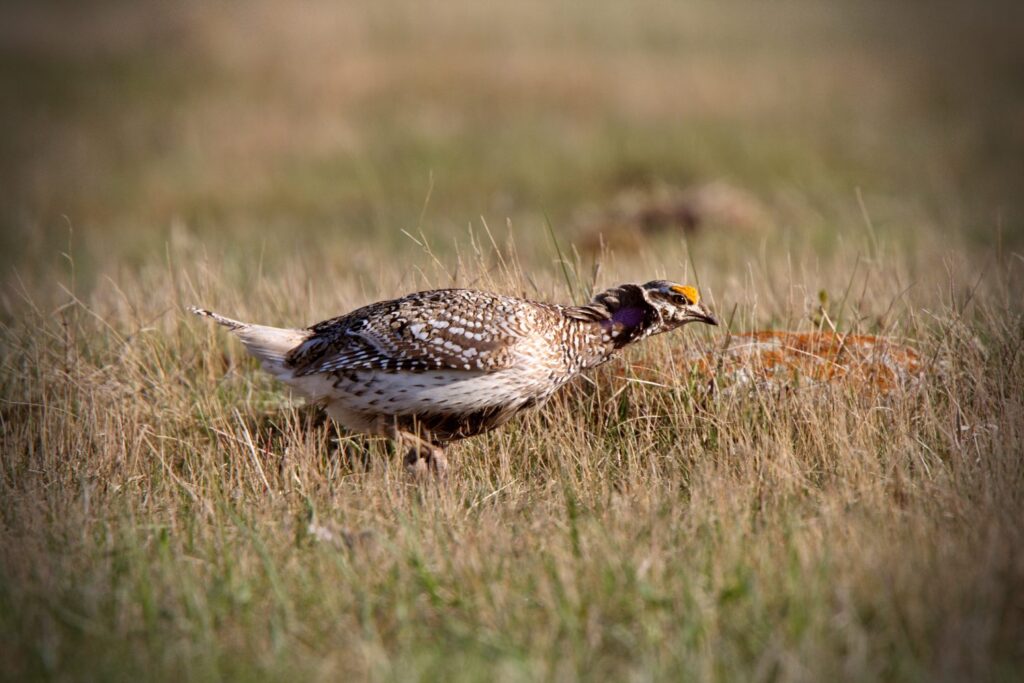
Other considerations include the destruction of insects — a prime food source — colliding with turbine blades. Researchers found that wind turbines in Germany resulted in a loss of about 1.2 trillion insects of different species each year. The concern is the impact such losses will have on the balance of local ecosystems.
The Northern Valley is also host to many acreages and farms where horses and cattle graze. EE’s project has placed many of these equestrian properties within the 1500m zone, which is a serious threat to both animal and human health. In the study “Wind turbines and adverse health effects: Applying Bradford Hill’s criteria for causation”,7 reports of negative effects on animals, which are known not to show any nocebo effect and which live close to wind turbines, resulted not only in stress reactions, but also in also negative effects on fertility, development and reproduction, such as malformed embryos and genetic mutation in animals. Horses have been found to avoid pasture areas closer to turbines, making pasture management a nightmare.8
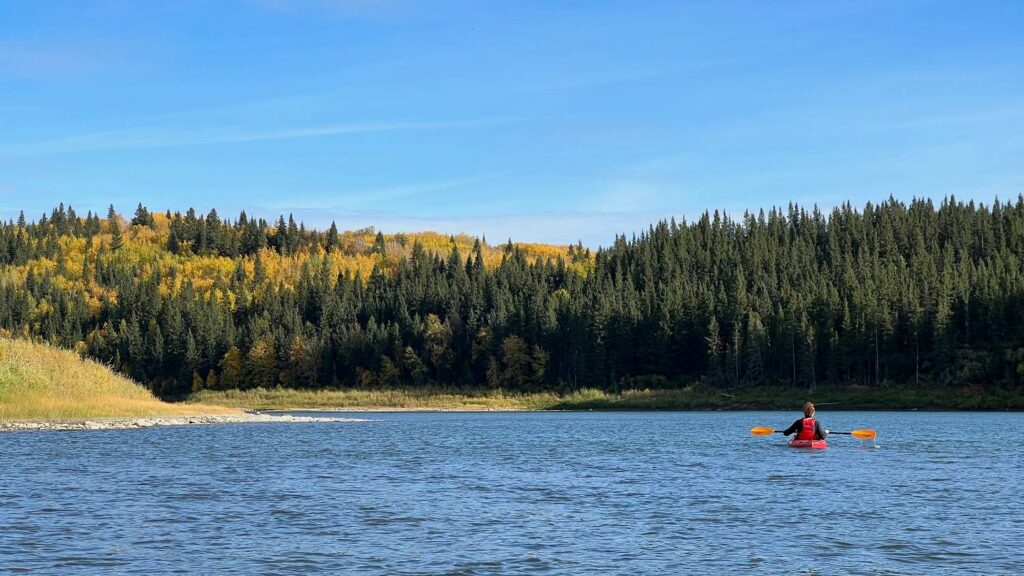
The North Saskatchewan River and the Lakeland region are host to a number of wildlife species including black bear, cougar, elk, white-tailed deer, moose, coyotes, and a great number of other creatures. The river valley itself acts as a corridor for wildlife and its waters contain many species of fish. It has been documented in a court of law that some animals will flee the presence of turbines, which again, could upset the delicate ecological balance of this sensitive region.9
There is also serious concern that Bisphenol A (BPA), one of the main constituents of turbine blades, may “shed” this material into the soil and waterways as protective resins break down from speeds approaching 300 kph at the end of the blade. Small concentrations of BPA damages the fertility of humans and all organisms.
Finally, the destruction to the land itself in this bio-sensitive area would be significant. Here is a wind turbine project in Minburn County southwest of the proposed Elemental Energy project. The destruction to good farm land and habitat can be massive.
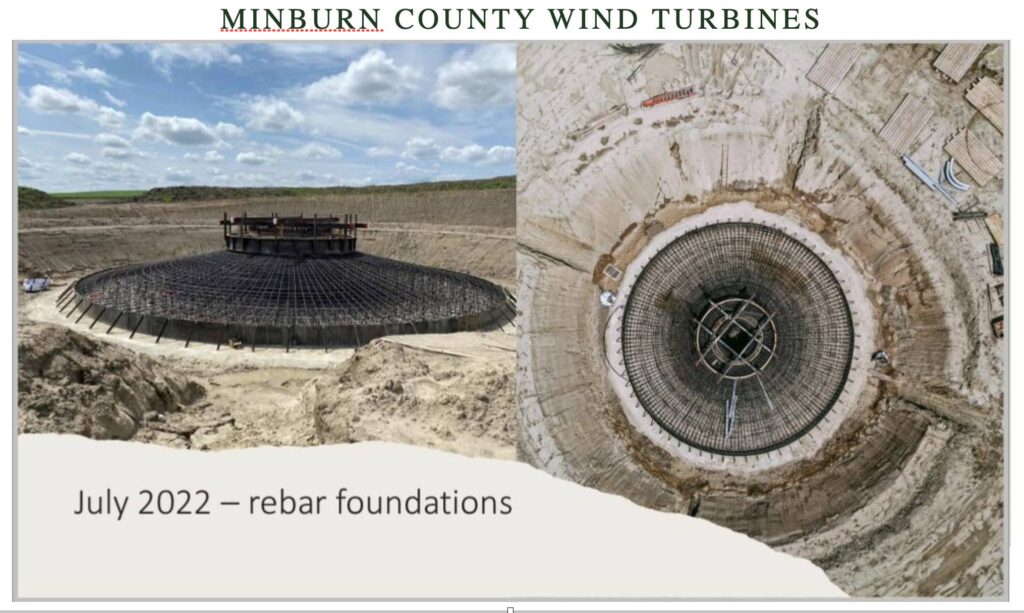

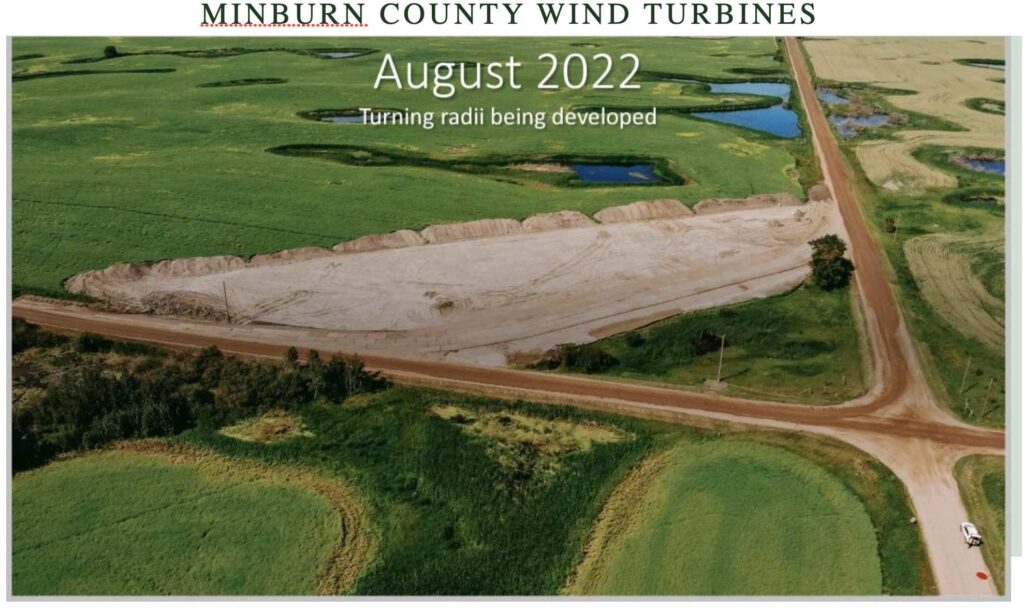
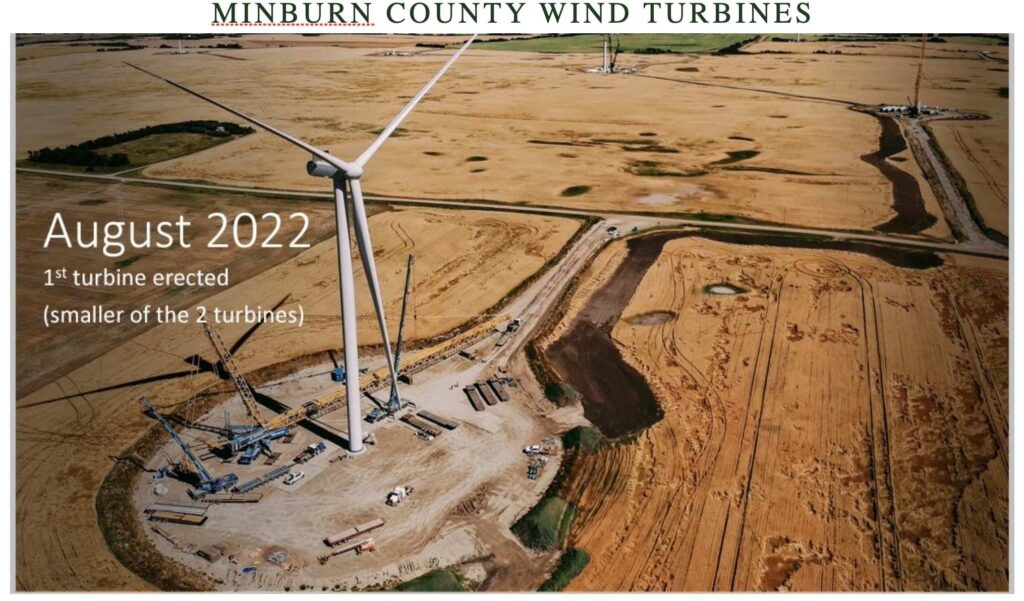
To build a wind farm along the sloping valleys to the North Saskatchewan river in a highly sensitive biodiverse wildlife zone is simply wrong and reckless and must be flat-out rejected by Alberta Environment and Protected Areas (AEPA), the Alberta Utilties Commission, and every thinking citizen. To contact the AEPA:
Contact information
Toll free: 310-3773 (in Alberta)
Toll free in Canada: 1-877-944-0313
International: 780-944-0313
Email: [email protected]
To Contact Hon. Minister Sonay Savage, the Minister of Environment and Protected Areas, and voice your objections:
Email: [email protected]
- cf. A Whooping Big Deal[↩]
- see www.alberta.ca/lookup/wild-species-status-search.aspx[↩]
- see here for Elemental Energy’s maps[↩]
- cf. here and here and here[↩]
- read Turbine Sickness: How Far Away is Safe; cf. the effects on animals here, and the physiological theory here of infrasonic emissions here[↩]
- January 29, 2020, ducks.ca[↩]
- ( 2021) Dumbrille et. al.[↩]
- stopthesethings.com[↩]
- cf. An Assault on Lakeland Wildlife and Animals[↩]
Wind Concerns is a collaboration of citizens of the Lakeland Alberta region against proposed wind turbine projects.

